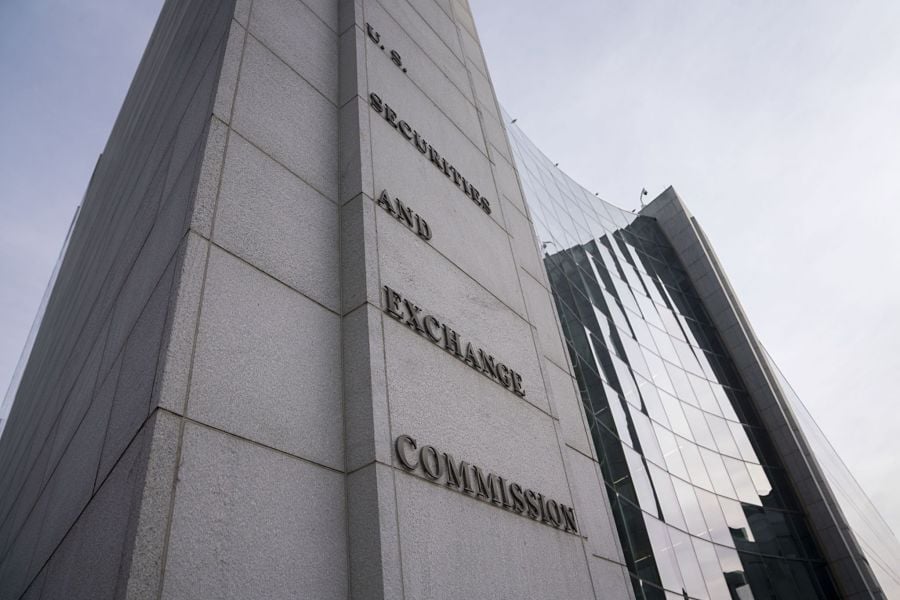

An SEC split along party lines approved rules Wednesday to increase the transparency and oversight of private funds, a move that could make it more expensive for investment advisors who manage such funds.
In a 3-2 vote, the Securities and Exchange Commission adopted regulations designed to better illuminate the inner workings of private funds. Under the new rules, advisors to the vehicles would have to provide quarterly statements to investors regarding fees, expenses, performance and advisor compensation. In addition, the funds would have to undergo an annual audit under the conditions of the existing advisor custody rule, according to an SEC fact sheet.
The regulations also would restrict certain activities of advisors to private funds. They would not be able to charge the fund fees related to regulatory compliance or portfolio investment, or reduce their clawback from the fund based on certain taxes, without disclosing the moves to investors. Other restricted activities, such as charging the fund for expenses related to an investigation of the advisor and borrowing from fund, require disclosure and investor consent.
The restrictions represent a modification from the original proposal, which prohibited many advisor activities that had become routine in the industry. The final rules put some limitations on another common private fund practice — giving preferential terms and treatment to some investors regarding redemptions and information. That can only be done under the new rules with appropriate disclosure and by offering the same terms to all investors.
The new reporting rules could increase regulatory costs for investment advisors who manage private funds for high-net-worth clients. At the end of March, 5,473 SEC-registered advisors (out of approximately 15,000) reported they were an advisor to a private fund, according to Comply, a compliance consulting firm. Within the universe of private fund advisors, about 20% have individual retail clients as well.
Some retail advisors create private funds — often hedge funds — to provide portfolio diversification and potentially higher returns for wealthy clients who qualify for such investments. Providing quarterly reports on fees, expenses and performance and conducting an annual audit likely will increase their regulatory expenses.
“It's going to be a costly issue, especially for smaller private funds,” said John Gebauer, chief regulatory officer at Comply. “There’s going to need to be a lot of operational changes to support the quarterly reporting of that information."
The consequences of the new private fund rule could be profound for retail advisors who operate a private fund, said Adam Kanter, a partner at law firm Mayer Brown. “We're going to see increasing costs and expenses throughout the [private] funds industry. It could eat into returns and be borne by investors."
Like many major rules the SEC has proposed and adopted, the private fund regulations caused a divide within the five-member panel. SEC Chair Gary Gensler and Democratic commissioners Caroline Crenshaw and Jaime Lizarraga voted in favor of the measure, while Republican commissioners Hester Peirce and Mark Uyeda opposed it. Shortly after the SEC open meeting, several congressional Republicans criticized the rules while Sen. Sherrod Brown, D-Ohio and chair of the Senate Banking Committee, praised them.
Gensler said shining a light on private funds would benefit a wide range of investors, including teachers, municipal workers and retirees whose money is managed by large institutional funds that invest in private equity and hedge funds.
“I am pleased to support this adoption because, by enhancing advisers’ transparency and integrity, we will help promote greater competition and thereby efficiency in this important part of the markets,” Gensler said during the SEC open meeting.
Peirce said the SEC hasn’t demonstrated a private-market failure that needs to be addressed and it lacks authority to make the changes.
“Unfortunately, the rulemaking is ahistorical, unjustified, unlawful, impractical, confusing and harmful — accordingly, I can’t support it,” Peirce said during the open meeting.
Gensler countered that the SEC can promulgate the rules.
“We are doing this grounded in clear authorities from Congress, clear authorities that were augmented and added to by the Dodd-Frank reform act,” Gensler said.
Crenshaw supported the rules, saying private funds are “marred by opacity.” Uyeda characterized the rules as “arbitrary and capricious.”
The Investment Adviser Association was wary of the initial proposal on private fund advisors. But it seems to be warming to the final rule thanks to revisions the SEC made after public comments. Among those the group cited: giving legacy status to existing private-fund agreements, changing advisors’ prohibited activities to restricted activities and allowing a longer compliance deadline for smaller advisors.
“Based on our preliminary assessment, and subject to our review and analysis of the 660-page release, we are pleased to see several important modifications to the proposal that appear to address many of the IAA’s concerns,” IAA general counsel Gail Bernstein said in a statement. "While the devil will be in the details and we still have significant concerns, the final rules are generally more reasonable than the proposed rules in many respects and better tailored to achieving the SEC’s objectives.”
The compliance date for the rules will vary from a year to 18 months after they’re published in the Federal Register, depending on the size of the private fund.

Relationships are key to our business but advisors are often slow to engage in specific activities designed to foster them.

Whichever path you go down, act now while you're still in control.

Pro-bitcoin professionals, however, say the cryptocurrency has ushered in change.

“LPL has evolved significantly over the last decade and still wants to scale up,” says one industry executive.

Survey findings from the Nationwide Retirement Institute offers pearls of planning wisdom from 60- to 65-year-olds, as well as insights into concerns.
Streamline your outreach with Aidentified's AI-driven solutions
This season’s market volatility: Positioning for rate relief, income growth and the AI rebound
